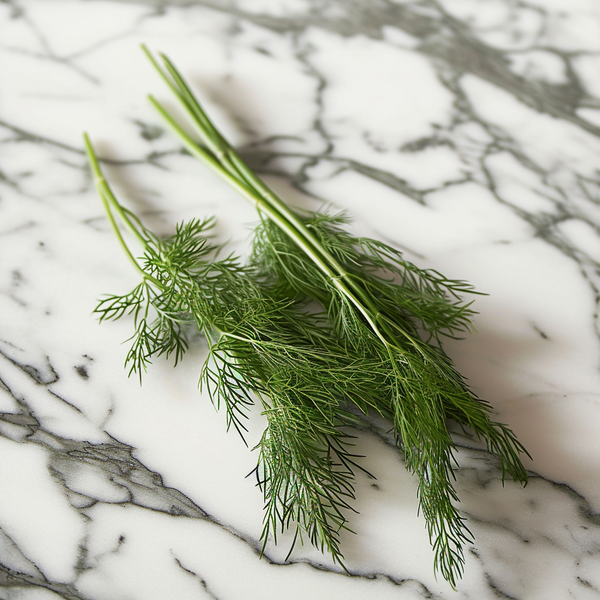
Dill
Dill is an aromatic herb known for its feathery green leaves and distinctive, slightly sweet and grassy flavor with a hint of anise-like licorice. It's used extensively in European, Middle Eastern, and Scandinavian cuisines, both in its fresh form and as dried dill. Dill is versatile and can be used in various culinary applications:
Seafood Dishes:
Dill pairs exceptionally well with fish and seafood. It's often used in sauces, marinades, or as a garnish for salmon, trout, and other fish dishes, enhancing their flavor with its fresh, aromatic qualities.
Pickling:
One of the most common uses of dill is in pickling. Both fresh dill and dill seeds are used to flavor pickled cucumbers, beets, and other vegetables, contributing to the characteristic taste of dill pickles.
Salads and Salad Dressings:
Freshly chopped dill is added to salads, potato salads, and coleslaws to provide a burst of freshness. It's also a key ingredient in dressings and vinaigrettes, where it adds a distinct flavor.
Soups and Stews:
Dill is used in various soups and stews, such as the classic Russian borscht and Scandinavian fish soups. It adds a depth of flavor and a fresh aroma, particularly when added toward the end of cooking.
Sauces and Dips:
It's a staple in sauces and dips, including tzatziki, a Greek yogurt-based sauce, and in Scandinavian mustard-dill sauces that often accompany gravlax (cured salmon).
Egg Dishes:
Dill complements egg dishes beautifully. It can be used in omelets, scrambled eggs, and egg salads to add a fresh, herby flavor.
Breads and Pastries:
Fresh or dried dill can be incorporated into the dough of bread, scones, and savory pastries, adding a subtle herby note.
Vegetable Dishes:
Dill is often used to season vegetables, particularly potatoes and carrots. It can be added to steamed or roasted vegetables or used in creamy vegetable casseroles.
Butters and Infused Oils:
Dill butter and dill-infused oils are prepared by mixing chopped dill with butter or stirring it into oil, respectively. These can be used to flavor a variety of dishes, from grilled meats to vegetables.
Grains and Legumes:
Dill can be added to rice, quinoa, lentils, and bean dishes to enhance their flavor with its fresh, aromatic qualities.
When using dill in cooking, it's important to add it toward the end of the cooking process if possible, as prolonged heat can diminish its flavor. Fresh dill is more flavorful than dried, but both can be used depending on the recipe and desired intensity of flavor. Dill's unique taste and fragrance can elevate a dish, providing a refreshing herbal note that complements a wide range of ingredients.
Nutritional Information
calories
43
carbohydrates
7.02 g
fats
1.12 g
protein
3.46 g